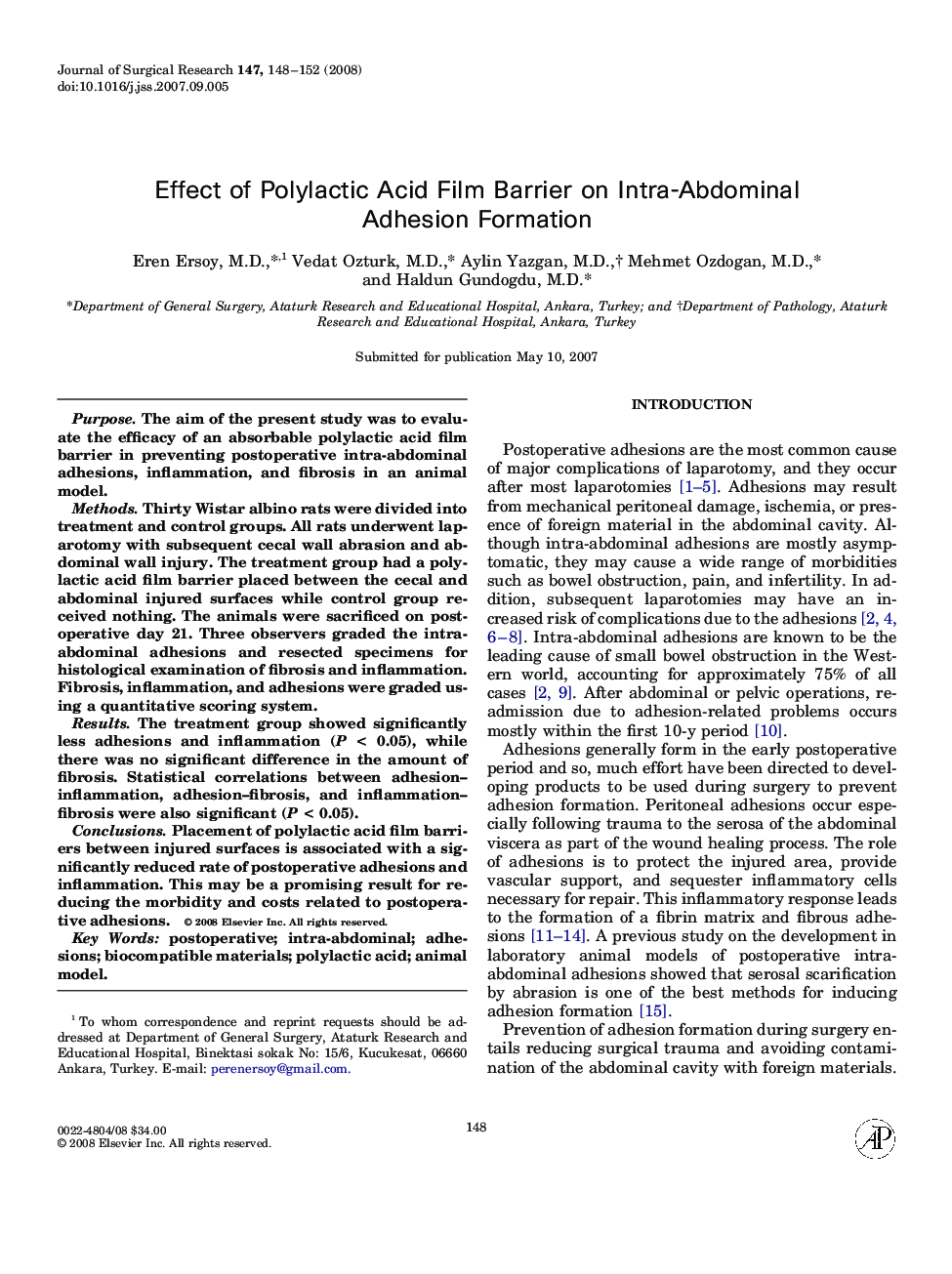| Article ID | Journal | Published Year | Pages | File Type |
|---|---|---|---|---|
| 4304417 | Journal of Surgical Research | 2008 | 5 Pages |
PurposeThe aim of the present study was to evaluate the efficacy of an absorbable polylactic acid film barrier in preventing postoperative intra-abdominal adhesions, inflammation, and fibrosis in an animal model.MethodsThirty Wistar albino rats were divided into treatment and control groups. All rats underwent laparotomy with subsequent cecal wall abrasion and abdominal wall injury. The treatment group had a polylactic acid film barrier placed between the cecal and abdominal injured surfaces while control group received nothing. The animals were sacrificed on postoperative day 21. Three observers graded the intra-abdominal adhesions and resected specimens for histological examination of fibrosis and inflammation. Fibrosis, inflammation, and adhesions were graded using a quantitative scoring system.ResultsThe treatment group showed significantly less adhesions and inflammation (P < 0.05), while there was no significant difference in the amount of fibrosis. Statistical correlations between adhesion–inflammation, adhesion–fibrosis, and inflammation–fibrosis were also significant (P < 0.05).ConclusionsPlacement of polylactic acid film barriers between injured surfaces is associated with a significantly reduced rate of postoperative adhesions and inflammation. This may be a promising result for reducing the morbidity and costs related to postoperative adhesions.
